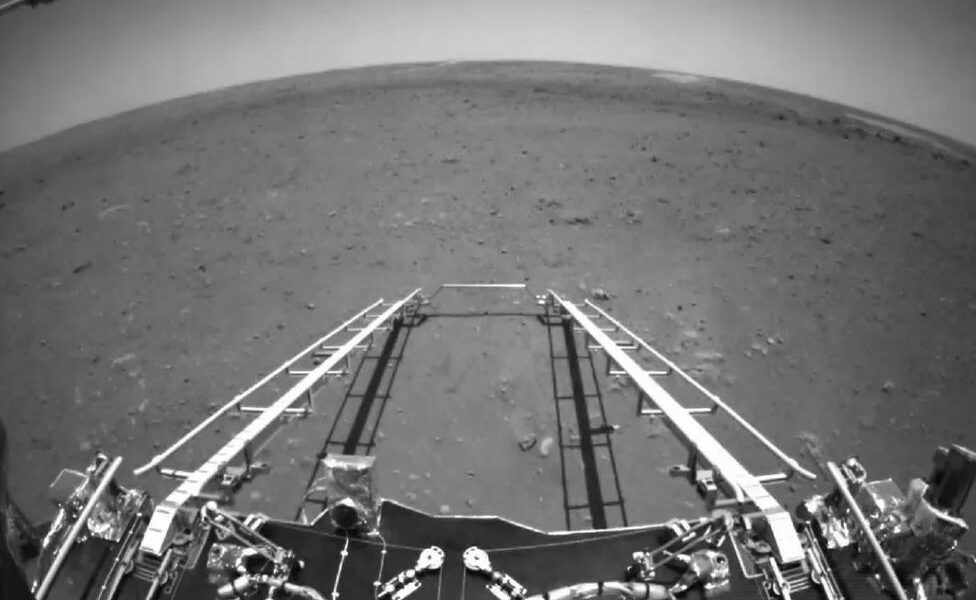
China’s remote-controlled rover, which landed on Mars a week ago, has driven down from its landing platform to the surface of the planet.
This makes China the second country after the US to work a meanderer there. The Zhurong robot is because of study the planet’s surface rocks and environment. It will likewise search for indications of life, including any subsurface water or ice. China’s Tianwen-1 mission, comprising of an orbiter, lander and meanderer, was dispatched in July last year.The vice president administrator of the mission, Zhang Yuhua, said the wanderer was intended to work for 92 Earth days (or 90 Mars days, known as “sols”, which are marginally more than Earth days) and would share its information through the orbiter.”We trust we can get an exhaustive covering of Martian geology, landform and climate, and the exploratory information of the radar recognizing the Martian subsurface during one Martian year,” she said. “Thusly, our nation will have our own plentiful and direct information about Martian assets.”
The sun based controlled, 240kg (530lb) six-wheeled robot – named after a Chinese legendary fire god – will investigate Utopia Planitia in Mars’ northern half of the globe. This titanic bowl – more than 3,000km (1,860 miles) wide – was likely shaped by an effect from the get-go in the planet’s set of experiences. There is some proof highlighting it having held a sea some time in the past. Far off detecting by satellites shows there are critical stores of ice at depth.Utopia Planitia is the place where Nasa handled its Viking-2 mission in 1976. The US handled the a lot bigger (one-ton) Perseverance robot in February, and its wandering mission is likewise getting going. Europe’s space organization, which has twice fizzled with landing endeavors, will send a meanderer called Rosalind Franklin to Mars one year from now in a joint task with Russia.





































































































































































































































































































































































































































































































































































































































































































































RSS